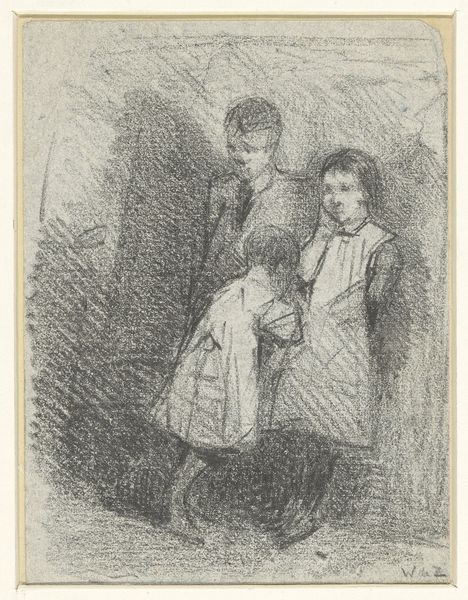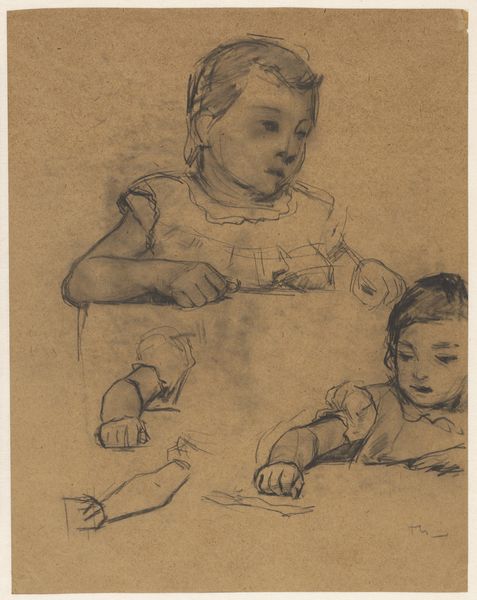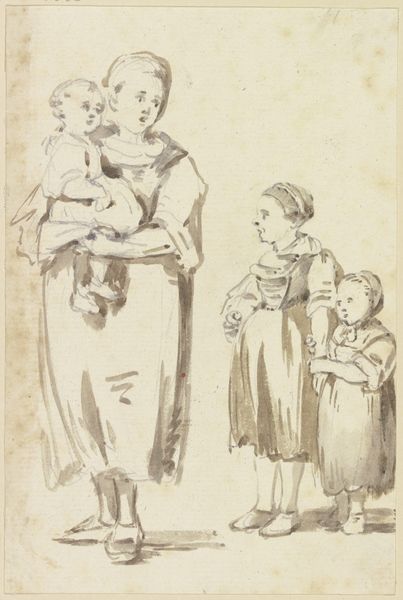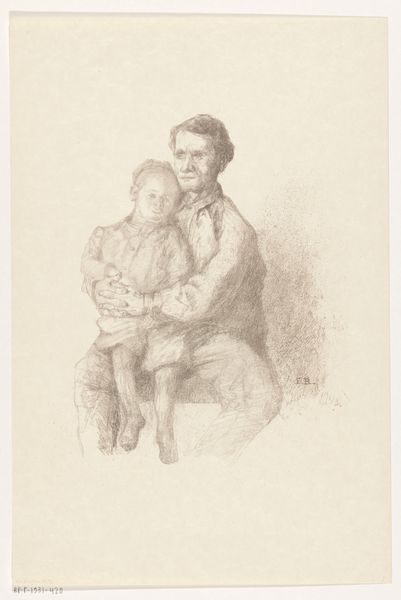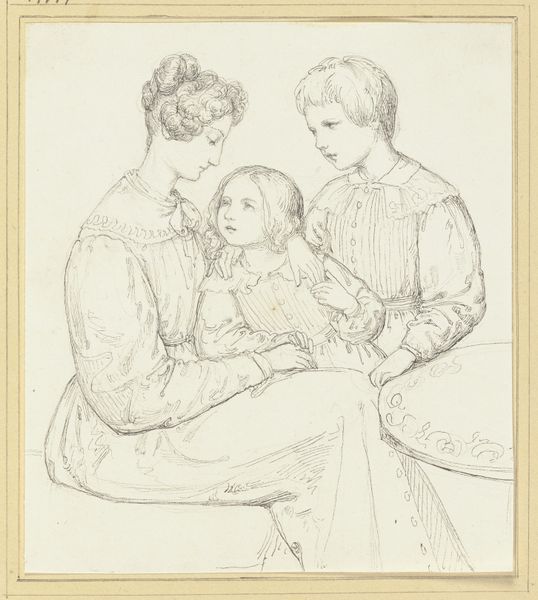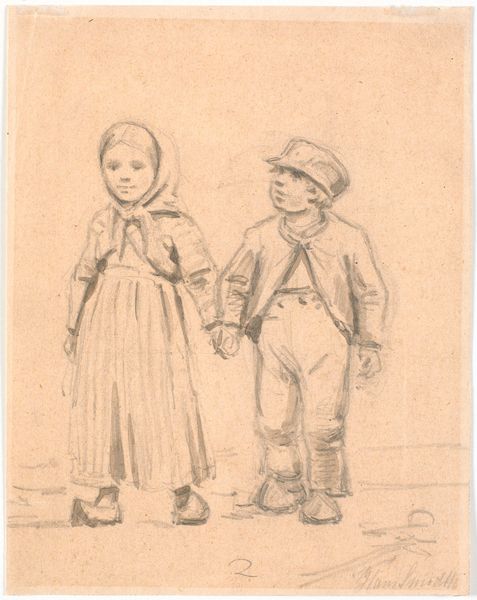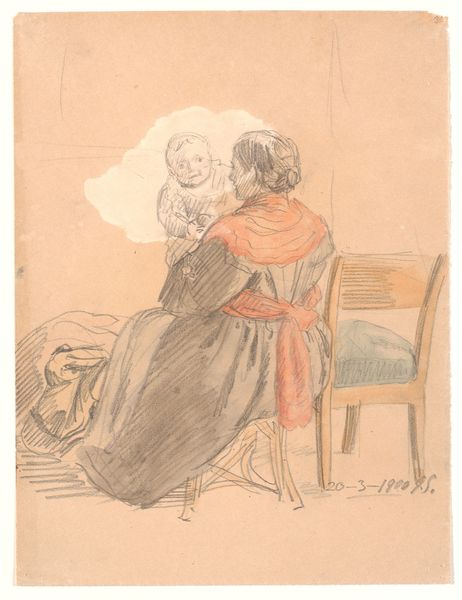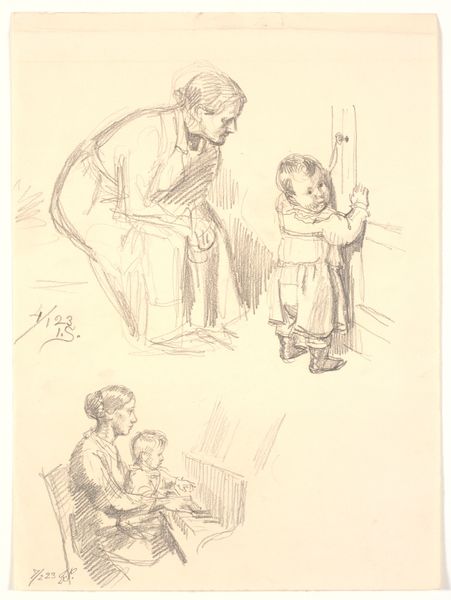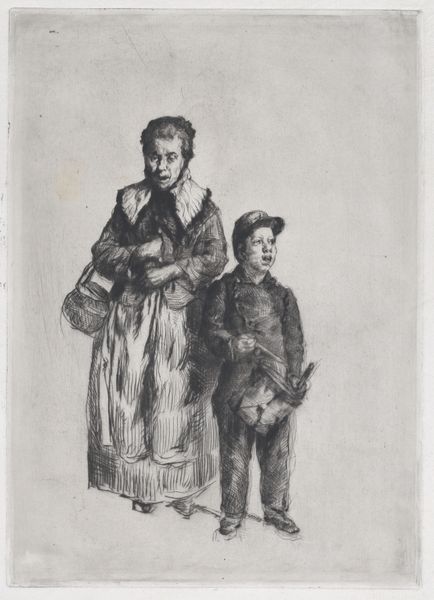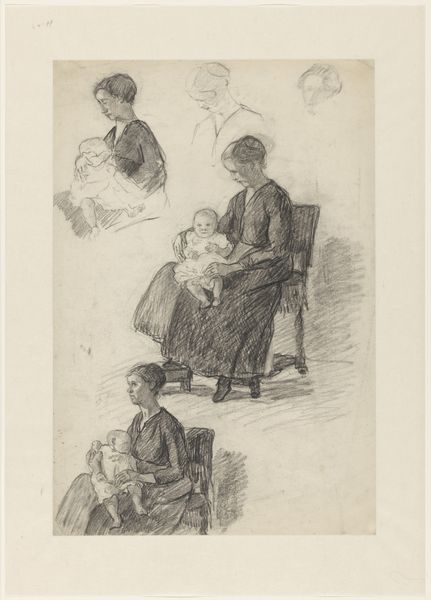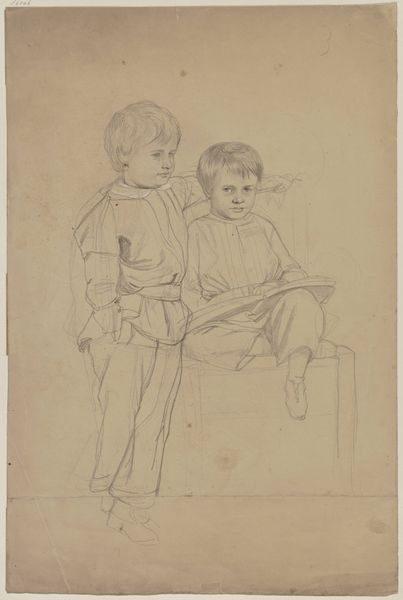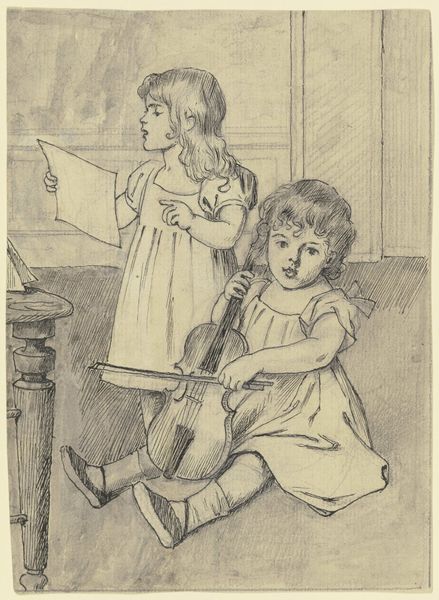
drawing, dry-media, pencil, graphite
#
portrait
#
drawing
#
figuration
#
dry-media
#
pencil
#
graphite
#
realism
Copyright: Public Domain
Curator: Here we have "Group Portrait of Three Siblings," a drawing rendered in graphite and pencil by Otto Scholderer, presently held here at the Städel Museum. What catches your eye about it? Editor: Immediately, it’s the directness. The gazes are so unwavering, particularly for children. There’s a sort of unsmiling gravity, especially from the oldest and youngest. Curator: It's interesting you say that. The portrait’s a study in realism, isn't it? Scholderer foregoes idealization, presenting the children with striking honesty. How do you see this impacting its emotional effect? Editor: It lends a sense of authenticity, like peering into a moment frozen in time. You can imagine this family and what their days may have looked like, it feels incredibly personal. But there's something almost unnerving about such raw emotion depicted in the features of such young children. Were commissioned portraits generally this somber? Curator: The mood is in step with a tradition in 19th-century portraiture to capture accurate likeness and often portray subjects with seriousness. Scholderer here maybe using the conventions to reflect some element of the period itself or to say something deeper about the subjects. Do you get a feeling for class or standing from this piece? Editor: Well, there are only the barest details, and the clothes lack ostentation. If the portrait was a display of wealth it is muted compared to examples we've looked at before, though maybe the sombre feel we noted initially is at odds with a need to display a family's place in the social hierarchy. This maybe a sincere family portrayal. What's interesting to me is how Scholderer has managed to capture not just likeness but also potential— you imagine the character of these children extending far beyond the image itself. Curator: Absolutely, there’s an intriguing vitality held within these muted tones and measured lines. It makes me think about our preconceptions about family portraits from that era. Editor: Exactly. What began as seeming traditional on first sight slowly unravels, leaving behind something compellingly original and emotionally open, I feel I could look at this study for a lot longer than it took the artist to draw it.
Comments
No comments
Be the first to comment and join the conversation on the ultimate creative platform.

